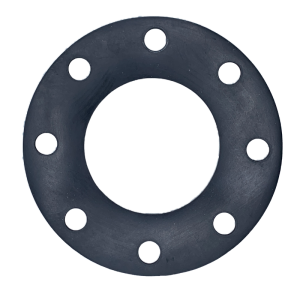How Is A Rubber Gasket Made?

A gasket is a mechanical seal that is primarily used to prevent gas, air, and liquid leakage. It can also be used as a barrier between two objects like two metals or chemicals.
This flexible element can be used for many purposes due to its broad functionality, including anti-vibration, noise and sound reduction, and, most commonly, sealing.
Rubber gaskets feature in many household appliances for several purposes, from sealing refrigerator doors to preventing washing machine leakage.
Table of Contents
Common Rubber Gasket Manufacturing Techniques

Cutting and punching play very significant roles in the gasket manufacturing process. They produce various products in several volume ranges, all dependent on specific requirements. Ideally, you must work with a manufacturing process that provides the best solution for you and one that’s ultimately fit for purpose. Some of the popular rubber gasket manufacturing techniques include:
Rubber gasket punching
Established in the 1800s, rubber gasket punching is the most traditional method in the gasket manufacturing process. It involves using a hydraulic or power press to force a Rule Forme (a special strip of steel bent into a preferred shape with the bottom edge sharpened into a blade) through a gasket sheet or shim material into a sacrificial cutting board below. The shape contained inside the cutter is the shim or finished gasket. This technique was initially popular in the shoe manufacturing industry of the past. In rubber gasket punching, the resulting shape punched out of the parent material is continually sized and repeatable, making this method the best choice for consistent gaskets produced in high volumes. You can also use semi-automated machinery and kiss cutting to punch out low or high-volume parts.
Water jet gasket cutting
Water jet cutting is sometimes the preferred method to punching for a quick run of rubber gasket shapes. Water jetting involves a high-pressure jet of water of about 0.1mm diameter being blown through a sheet of parent material to cut it. A CNC controller is used to drive around this sheet. This technique enables hard or soft solid or cellular materials to be cut into an infinite variety of shapes rapidly and without the deformation that’s typical in punching methods. However, materials that absorb water are unsuitable for this process.
Oscillating knife cutting
This process is quite like water jet cutting, the key difference being the replacement of a water jet stream with either an oscillating or “drag” knife to cut through the material. This is more beneficial than laser cutting as you do not get any scorch.
With this process being computer controlled, the required gaskets are “nested” using CAD software, to ensure the best yield from the material.
Rubber gaskets hand cutting
Hand cutting is one of the traditional methods in the gasket manufacturing industry but remains reliable and useful. It’s typically performed for jobs that require bespoke gaskets to be cut in the field. Manufacturers hand-mark out shapes and then use utility knives, saddle punches, and scissors to create large or special gaskets. Hand-cut gaskets usually have more than one cut mark or scribe, which can lead to jagged edges in the rubber gasket, creating a weak point. Also, hand cutting is somewhat slow and tedious and often results in a higher yield of gasket waste or scrap.
Strip cutting rubber gaskets
You’ll need a rotary knife to strip cut rubber gaskets and transform the strip material into the end product. The rotary knife press divides long sheets of material into strip form using circular rotation knives. The space between each blade is set to determine the width of the final strip produced. Strip cutting rubber gaskets remains an efficient way to convert sheet material into a finished product, which can then be joined to create bands.
Finishing
Rubber gaskets aren’t 100% complete when they come off the production line. As such, gaskets need to be finished by sealing experts who’ll ensure that the manufactured products are trimmed, finished, and packaged according to high standards of excellence you’d expect throughout the manufacturing process.
Related articles
Why Choose WC Munsch & Co. As Your Rubber Gasket Manufacturers?
Here at Munsch &Co., we manufacture and supply all types of gaskets and seals both locally and internationally. We’re renowned in the sealing industry for our extensive knowledge and professionalism in the sector, and our team has over 100 years of combined experience in providing sealing solutions. Our gaskets are high quality and cost-effective, made to meet your specific requirements under high standards, and delivered quickly.
